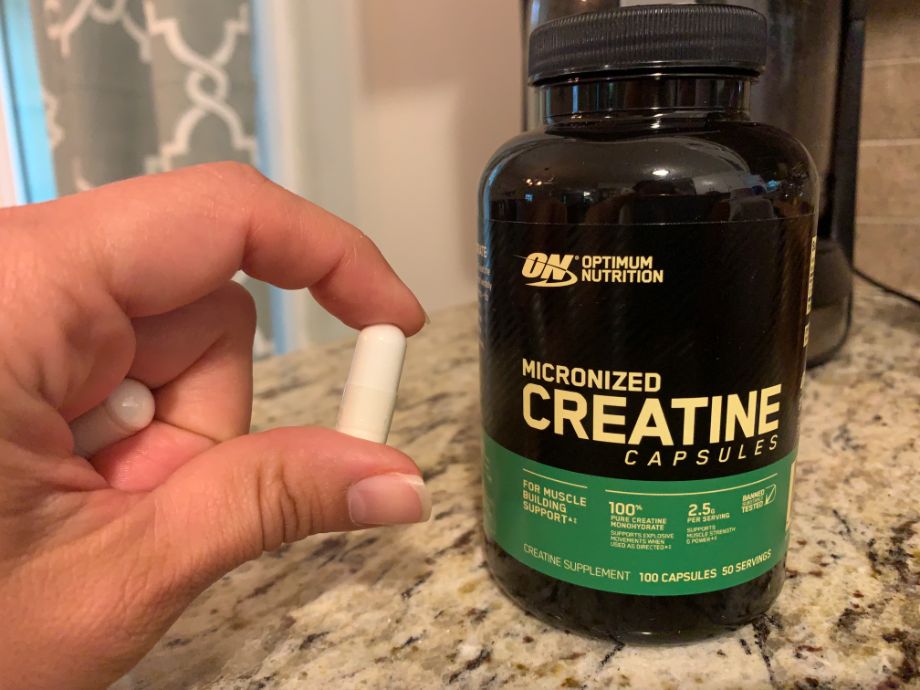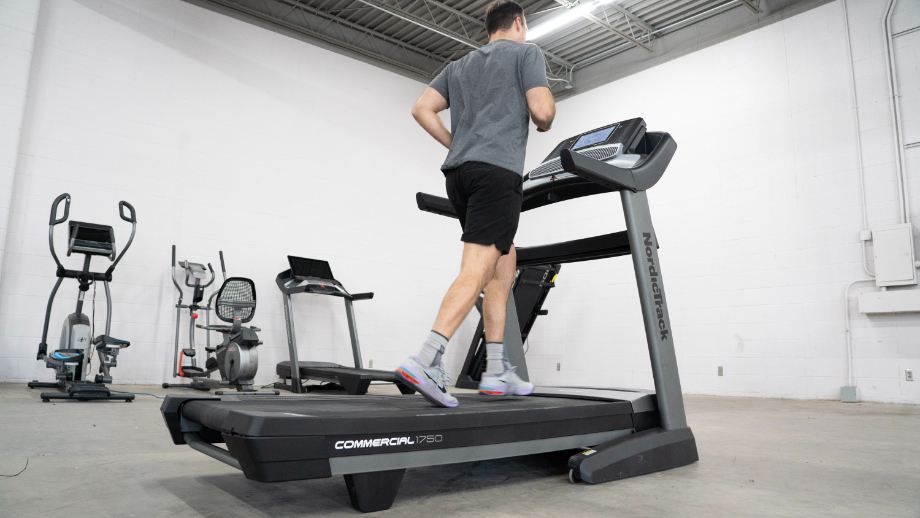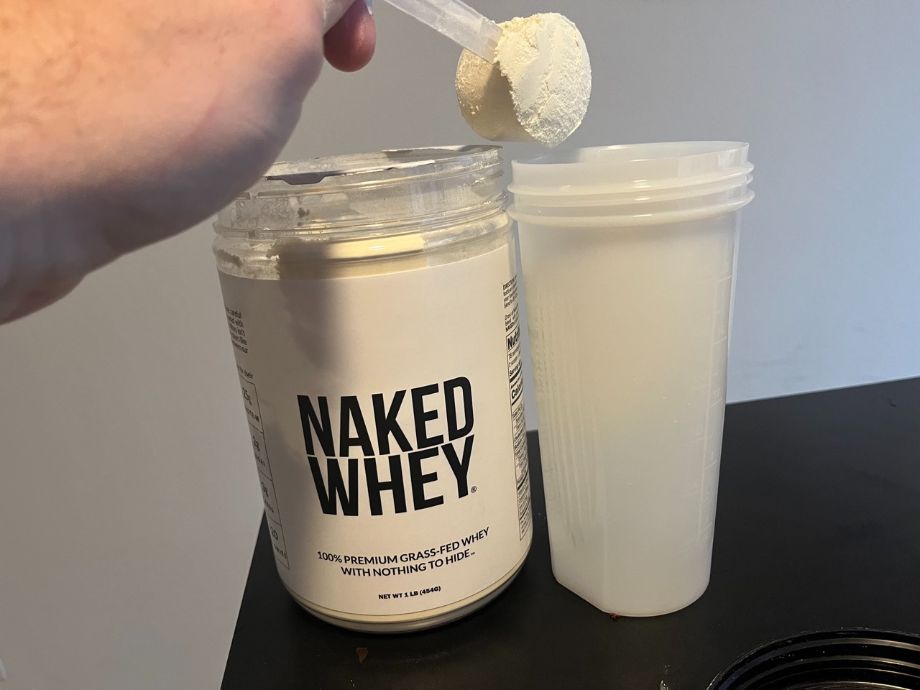We test and review fitness products based on an independent, multi-point methodology. If you use our links to purchase something, we may earn a commission. Read our disclosures.
Whether your goals include better athletic performance, enhanced muscle strength, or muscle growth, creatine can help get you there.
The best creatine supplements are so effective that they’re one of the most reached-for dietary supplements in the world of athletics and bodybuilding. It’s no wonder: Creatine is also one of the most well-studied sports nutrition ingredients and has been coined safe and effective by the International Society of Sports Science (ISSN). But what is creatine?
Keep reading to learn how creatine works, the benefits you can get from taking creatine, how much creatine to take, and potential side effects of creatine supplementation.
Medical disclaimer: This article is intended for educational and informational purposes only. It is not intended as a substitute for medical advice. For health advice, contact a licensed healthcare provider.
What is Creatine?
Creatine is a substance that’s very closely related to nonessential amino acids, but it is not a protein. The active form of creatine is called phosphocreatine, which is stored primarily in skeletal muscles where it serves as a form of energy storage. Some phosphocreatine is also found in brain tissue and in male reproductive organs.

Muscle activity relies on the synthesis of cellular energy in the form of ATP (adenosine triphosphate). Phosphocreatine helps muscle cells make more ATP to power muscles during high-intensity exercise.
Your body naturally produces some creatine from nonessential amino acids glycine, arginine, and methionine. We also take in some creatine from animal foods, like red meat, poultry, and seafood. Creatine does not naturally occur in plant foods, so creatine supplementation may be extra important for vegetarian and vegan athletes.
How Does Creatine Work?
Creatine helps muscles produce ATP energy under anaerobic conditions. Anaerobic means without the use of oxygen. Short-term exercises that take a lot of power, like powerlifting and sprinting, rely on creatine to quickly fuel muscles with energy.
RELATED: Powerlifting Records
Maximizing muscular creatine is especially effective for helping muscles produce more energy and power during high-intensity exercise. This can translate to sprinting faster, lifting heavier, increased reps, and more rapid muscle gains.
Use of creatine supplements can increase your levels of muscle creatine and the amount of energy your muscles can produce during exercise. Creatine supplements work by increasing the amount of phosphocreatine stored in muscles so your muscles can make more ATP during exercise. Your body processes creatine and the waste byproduct is known as creatinine.
Types of Creatine
Most oral creatine supplements come in powdered crystalline form, which easily dissolves in water. You can also find liquid creatine supplements that are ready-to-drink.
You’ll find different types of creatine in supplements, including:
- Creatine monohydrate
- Creatine citrate
- Creatine ethyl ester
- Creatine hydrochloride
- Creatine phosphate
- Creatine pyruvate
- Buffered creatine
What’s the difference and how do you know which one to take?
The most well-studied form of creatine supplementation is creatine monohydrate. Other forms of creatine have been associated with better absorption rates, but creatine monohydrate is the only form that consistently shows maximum benefits for workout performance and muscle growth.

According to the International Society of Sports Nutrition Position Stand: Safety and Efficacy of Creatine Supplementation in Exercise, “creatine monohydrate is the most effective ergogenic nutritional supplement currently available to athletes in terms of increasing high-intensity exercise capacity and lean body mass during training.”
Foods High in Creatine
Supplements can be very helpful and cost-effective, but if you prefer to get your creatine from whole-food sources, you’re in luck. But where can you start? Registered dietitian Destini Moody explains, “The best natural sources of creatine come from animal products, and this is simply because animal-based foods tend to have more of the amino acids needed for creatine synthesis.”
A quick list of creatine-high food includes:
- Seafood
- Red meat
- Poultry
- Dairy
That said, if you eat a plant-based diet, you more than likely will be unable to boost your creatine levels with food. You can find more information in Destini’s article “Supplement Naturally With The Best Foods With Creatine.”
Benefits of Creatine
Creatine supplements are linked to improved athletic performance, enhanced strength, increased muscle mass, injury prevention, and better post-workout muscle recovery. It’s also been found to benefit brain and neurological health.
Improved Athletic Performance
Creatine improves physical performance during exercise by enhancing strength and shortening the amount of rest you need between sets. In other words, you’ll be able to sprint a few seconds longer or lift heavier and complete more reps during high-intensity weight training.
Creatine supplements have even been found to improve strength in patients with muscular dystrophy, which is characterized by muscle weakness.
Increased Muscle Mass
Creatine pulls water into muscles to help generate ATP. This increase in water volume gives your muscles an instant boost in size when you start taking creatine. The enhanced cell volume also signals muscle cells to grow. Of course, creatine also supports muscle growth by allowing you to do more work during exercise.
A 2022 systematic review 2 analyzed the results of 16 research trials that studied the effects of creatine supplements on muscle mass; participants who received creatine experienced more muscle growth than those given a placebo.
Creatine’s effects on lean body mass also makes it beneficial for older adults3 who are at risk of sarcopenia, or age-related muscle loss. Research has found combining creatine supplements with resistance training in older populations helps improve muscle mass and strength.
Injury Prevention
Individuals who take creatine have been found to have fewer muscle cramps and less incidence of exercise-induced injuries to muscles and connective tissues than those who do not supplement with creatine.
Muscle Recovery
Creatine supplementation has been linked to less damage to muscle fibers, which results in decreased workout recovery4 time. (Creatine definitely made it onto our list of the best muscle recovery supplements.)
Brain Health
Creatine supports functioning of the brain and nervous system5. Clinical trials have found creatine may help prevent and manage neurological conditions, including Parkinson’s disease and Alzheimer’s disease. It’s also being studied for enhancing recovery from brain injuries.
Side Effects of Creatine
Creatine is a very well-studied ingredient. Research studies consistently find creatine supplements are safe, effective, and well-tolerated by most healthy adults when standard doses are taken.
Still, no supplement comes without some degree of risk. Luckily, the most common adverse effects associated with creatine supplementation tend to be mild and temporary. Some people experience puffiness and all-over body bloating when they take creatine. This is due to creatine’s ability to bind with water, which can increase fluid retention and cause water weight gain.
It’s important to remember any weight gain caused by taking creatine is an increase in lean mass (due to water retention) and not an increase in fat. Bloating and weight gain may be reduced or avoided by taking a lower dose of creatine, drinking plenty of water with creatine, and taking a lower dose or skipping creatine on rest days.
Higher doses of creatine can cause some stomach upset, too. And very high concentrations of creatine have been linked to changes in liver and kidney function, so it’s a good idea for anyone with liver or kidney disease to speak with a healthcare provider before trying creatine to see if it’s safe for their needs.
Now that you know the benefits and risks associated with creatine, let’s review how to figure out how much creatine to take.
How to Dose Creatine
When you start taking creatine, you have two options for dosing: You can start with the standard amount, or you can go through a loading phase, known as creatine loading.
Many weightlifters choose to start with creatine loading for faster results. Creatine loading involves taking higher doses of creatine for a short duration, about one week, to quickly increase the amount of creatine stored in muscles. After the loading phase, the dosage is decreased to a maintenance amount.
RELATED: How Long Does Creatine Stay In Your System?
Here’s the typical dosing for creatine loading:
- Loading phase: 20 to 25 grams of creatine daily for 5 to 7 days
- The total daily amount of creatine during the loading phase is split into four or five 5-gram servings that are spread throughout the day.
- Maintenance phase: 3 to 5 grams of creatine taken once daily

To figure out your idea creatine loading doses, you can use these formulas:
(Body weight in pounds) multiplied by (0.14 grams of creatine) = Creatine Loading Dose
(Body weight in pounds) multiplied by (0.04 grams of creatine) = Creatine Maintenance Dose
The biggest benefit of creatine loading is more immediate results that you’ll notice within that first week of taking a higher dose. However, you’re more likely to experience side effects with creatine loading, like bloating or a stomachache.
If you don’t like the idea of creatine loading, you can start with the maintenance dose of creatine, which is 3 to 5 grams daily. This method is also known as gradual creatine loading and researchers have found it’s just as effective for maximizing creatine stores in muscles—it simply takes longer. It can take a few weeks up to one month to reach peak creatine levels in your muscles and notice a difference in your workouts.
How To Take Creatine
If your goal is muscle gain, you’ll want to take creatine as part of your post-workout routine. Taking creatine right after a workout has been found to be the most effective timing strategy for muscle growth. You can mix creatine with water and take it straight after working out, or add it to a post-workout shake (maybe using the best protein powder for smoothies?).
There’s some evidence that taking creatine with food, particularly carbohydrates, can enhance absorption and delivery to muscles. Carbohydrate intake triggers release of insulin from the pancreas, which can help muscle cells uptake creatine. If you already have a post-workout shake or meal, that would be a good time to add in your creatine supplement. On rest days, pairing creatine with a meal can help you remember to take it and may help boost absorption.
RELATED: Can You Dry Scoop Creatine?
Whether you choose to try creatine loading or a standard daily dose, your creatine supplement should be taken with plenty of water—at least 8 ounces with each dose. Creatine relies on water to work optimally, so you’ll want to be sure to stay well hydrated throughout the day while taking creatine.
Is Creatine Safe?
Creatine is one of—if not THE—most well-researched nutritional supplement. As long as you’re taking the recommended dosage (no dry scooping!), creatine is likely to be safe. Some users may experience creatine side effects like weight gain (mostly from water), cramping, and stomach upset. If you fall into this category, consider reducing the dosage or discontinuing use completely.
What is Creatine? Final Thoughts
If you want to build muscle and take your workouts to the next level, a creatine supplement might give you the edge you’re looking for. Creatine supplements are well-studied and can help you workout harder, for longer. Taking creatine is also linked to larger muscles, due to creatine’s ability to pull water into muscles, and muscle gain over time.
- Creatine is a substance your body naturally makes from amino acids. You also get some creatine from eating meat and seafood.
- Creatine is stored in muscles as phosphocreatine and its main job is to help your muscles produce more energy in the form of ATP during exercise.
- Creatine supplementation is linked to increased strength and enhanced athletic performance, which can help you build and grow muscle as you train.
- Creatine supplements may also help maintain muscle mass in older adults and prevent sarcopenia, or age-related loss of lean mass.
- The most common side effect of supplementing with creatine is bloating and/or weight gain due to water retention.
- To get started, you can take a standard dose of 3 to 5 grams of creatine per day or go through a loading phase, where you take 20 to 25 grams per day for one week before switching to a standard dose.
Experts Who Contributed to This Article
What is Creatine? FAQs
What does creatine do to the body?
Most of the creatine in your body is found in muscles and brain tissue. Its primary function is to help cells in your muscles and brain produce more ATP (adenosine triphosphate), which is the main form of energy your cells use to do work. When your muscle cells make more ATP, you experience increased strength and power during exercise.
Does creatine have side effects?
Because creatine is naturally present in our muscles, creatine supplementation is considered safe and is usually well-tolerated with few side effects. Some creatine users experience bloating and weight gain caused by water retention, especially when they first start taking it. These side effects can typically be managed by adjusting the amount of creatine you take and drinking enough water with creatine.
Very high doses of creatine have been linked to changes in liver and kidney function, so individuals with liver or kidney conditions should consult with a doctor to see if a creatine supplement is safe to take.
Who should take creatine?
Creatine supplementation offers several benefits, such as increased strength and better exercise performance, which supports muscle growth. Creatine’s effects on muscle strength and size are beneficial for bodybuilding, weightlifting, and athletics.
Creatine supplementation has also been linked to improved muscle function and preservation of muscle mass in older adults. Research also suggests creatine may improve brain health and be helpful for managing symptoms of neurological conditions, such as Parkinson’s disease, Alzheimer’s disease, and Huntington’s disease.
Is creatine a form of protein?
No, creatine is not a protein and creatine supplements are not the same as protein powder supplements. However, both can be used to support lean muscle mass and strength, in different ways.
Creatine is a naturally occurring substance in animals and humans that’s made from several amino acids, which are the building blocks of protein. Proteins contain long chains of many types of amino acids.
Creatine supplements are used to increase energy in muscle tissue, which boosts exercise performance and strength. Protein, whether sourced from food or supplements, supplies your muscles with the amino acids needed to support muscle growth and recovery.
RELATED: Is Creatine a Protein?
These statements have not been evaluated by the Food and Drug Administration. This product is not intended to diagnose, treat, cure, or prevent any diseases.
References
- Buford TW, Kreider RB, Stout JR, et al. International Society of Sports Nutrition position stand: creatine supplementation and exercise. J Int Soc Sports Nutr. 2007;4:6. Published 2007 Aug 30. doi:10.1186/1550-2783-4-6
- Wu SH, Chen KL, Hsu C, et al. Creatine Supplementation for Muscle Growth: A Scoping Review of Randomized Clinical Trials from 2012 to 2021. Nutrients. 2022;14(6):1255. Published 2022 Mar 16. doi:10.3390/nu14061255
- Candow DG, Forbes SC, Kirk B, Duque G. Current Evidence and Possible Future Applications of Creatine Supplementation for Older Adults. Nutrients. 2021;13(3):745. Published 2021 Feb 26. doi:10.3390/nu13030745
- Wax B, Kerksick CM, Jagim AR, Mayo JJ, Lyons BC, Kreider RB. Creatine for Exercise and Sports Performance, with Recovery Considerations for Healthy Populations. Nutrients. 2021;13(6):1915. Published 2021 Jun 2. doi:10.3390/nu13061915
- Roschel H, Gualano B, Ostojic SM, Rawson ES. Creatine Supplementation and Brain Health. Nutrients. 2021;13(2):586. Published 2021 Feb 10. doi:10.3390/nu13020586
Further reading

Whether your goals include better athletic performance, enhanced muscle strength, or muscle growth, creatine can help get you there. The best creatine supplements are so effective that they’re one of the most reached-for dietary supplements in the world of athletics and bodybuilding. It’s no wonder: Creatine is also one of the most well-studied sports nutrition ingredients and has been coined safe and effective by the International Society of Sports Science (ISSN). » Read more about: What is Creatine? A Registered Dietitian Explains The Benefits of This Supplement » Read more

The best treadmills under $2,000 are packed with high-end features but don’t break your budget. Read more

If your training demands require it, a carb supplement can help boost your energy at opportune times. Below, our expert rounded up the best carb supplements for your needs. Read more

Whether your goals include better athletic performance, enhanced muscle strength, or muscle growth, creatine can help get you there. The best creatine supplements are so effective that they’re one of the most reached-for dietary supplements in the world of athletics and bodybuilding. It’s no wonder: Creatine is also one of the most well-studied sports nutrition ingredients and has been coined safe and effective by the International Society of Sports Science (ISSN). » Read more about: What is Creatine? A Registered Dietitian Explains The Benefits of This Supplement » Read more

